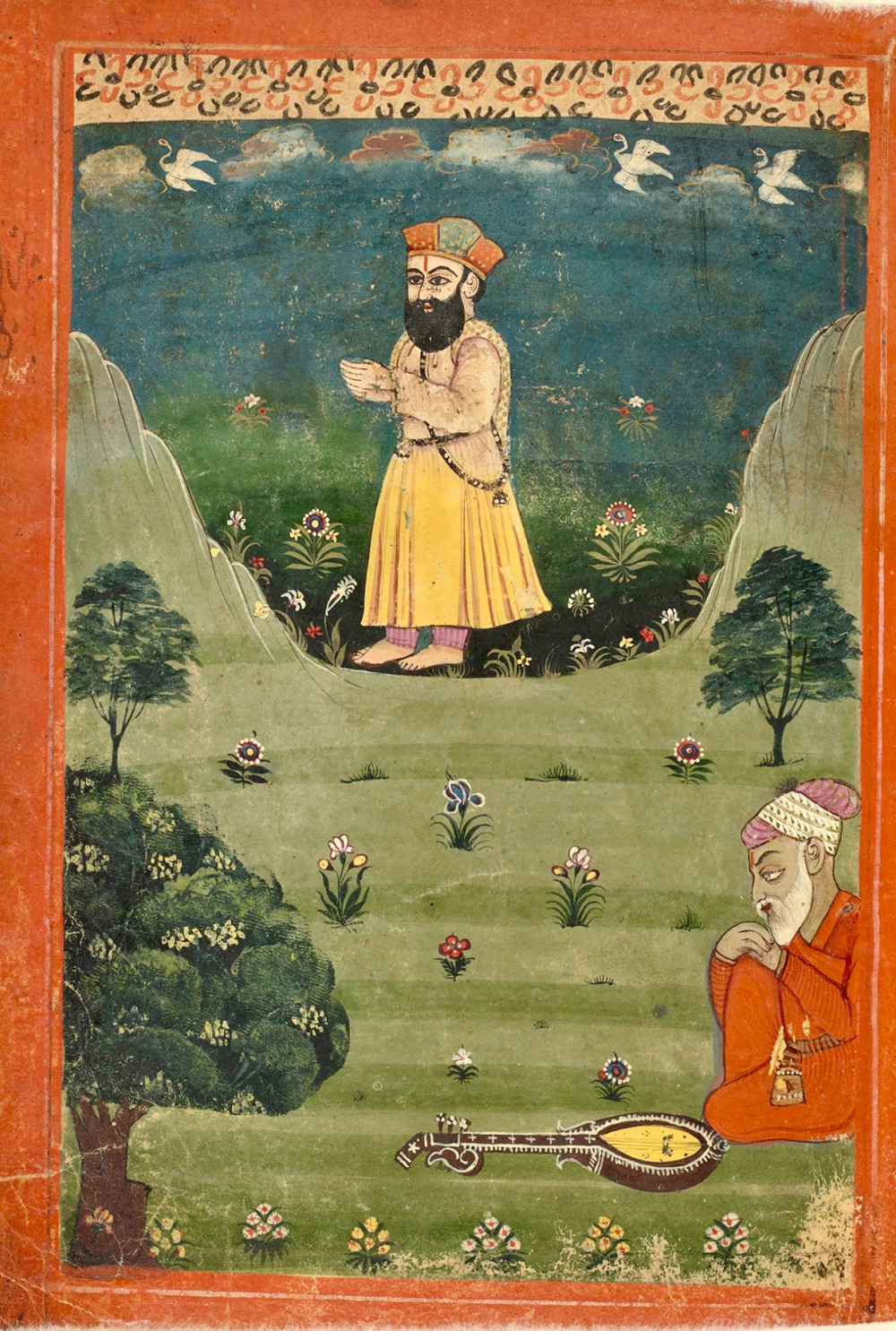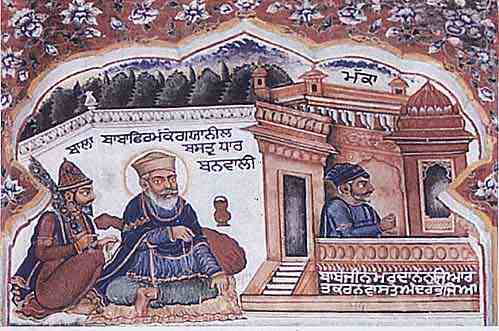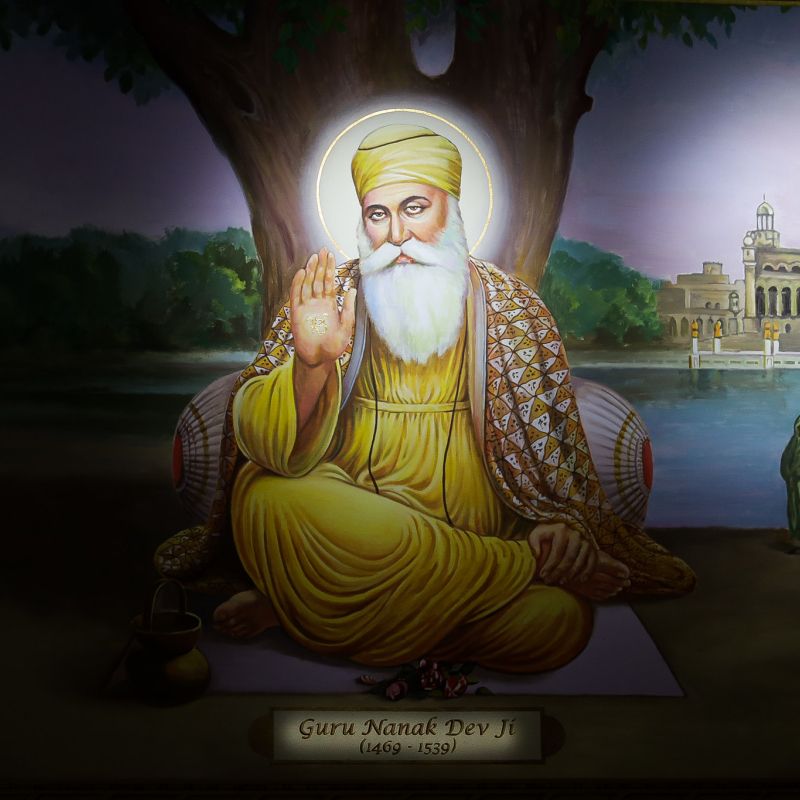The founder of Sikhism, Guru Nanak’s life has been recorded in Janamsakhis, while his travels on foot—across nine countries over 21 years—are known as Udasis. We take a peek into these records of how a young storekeeper emerged from a river as a Guru, and went on to change the world forever. We also delve into some of his travelogues. (Photo courtesy: Province of British Columbia's Photostream/Flickr CC)
Around the year 1485, a 16-year-old boy named Nanak moved to Sultanpur Lodhi in Punjab, where he lived for the next 14 years. Each day before sunrise, he would go for ablutions by the Kali Bein, a seasonal rivulet, accompanied by Mardana, the minstrel boy and his to-be lifelong companion. One day, to Mardana’s surprise, Nanak plunged into the river but didn’t surface. Mardana waited and waited and then rushed to the town to seek assistance. Everyone thought that either Nanak had drowned or had been washed away in the river, which was in spate.
Nanak was then working as a storekeeper for Nawab Daulat Khan, governor of Jalandhar Doab. When the Nawab learnt about the incident he rushed to the spot and asked the fishermen to throw their nets in the rivulet and find Nanak. All efforts failed.
Then, suddenly on the fourth day, Nanak appeared in town. Khan heaved a sigh of relief and there was great rejoicing among his friends and relatives. But by now Nanak was a completely changed man. His face was radiant and there was divine light in his eyes. He was perpetually in deep reflective thought.
Also see | Sikh Sites in Rajgir
As word about Nanak’s return spread, people started thronging the place. They asked him where he had been, but Nanak remained silent. People said he was in the water for many days so he was out of his mind. But Nanak did not respond. After a day passed, he said: ‘Na koi Hindu, na koi Mussalman (There is no Hindu, there is no Muslim)’. Each time he spoke, he repeated these words.

The Janamsakhi[1] (literally, life story or biography) describes the incident as a communion with God,[2] who gave him a cup of nectar to drink and charged him with the mission in the following words: ‘Nanak I am with thee. Through thee will my name be magnified. Whosoever follows thee, him will I save. Go into the world to pray and teach mankind how to pray. Be not sullied by the ways of the world. Let your life be one of praise of the Word (naam), charity (daan), ablution (isnaan), service (seva) and prayer (simran). Nanak, I give thee my pledge. Let this be thy life’s mission.'[3]
The ‘mysterious’ voice spoke again: ‘Nanak he whom you bless will be blessed by Me; he to whom you are benevolent shall receive My benevolence. I am the Great God, the Supreme Creator. Thou art the Guru, The Supreme Guru of God.’ Nanak is said to have received the robe of honour from the hands of God Himself who revealed to him the ‘Divine Reality’.[4]
It is significant to understand here that in medieval Hindustan, though the Muslims were the main persecutors of the Hindus and the Sikhs, Nanak’s words, ‘There is no Hindu, there is no Mussalman’, was meant to disregard the conflict with them in the spirit of a ‘spiritually aroused person’, one who bears ill-feelings towards none.
Also read | Sikh Devotional Music— Its Main Traditions, by Ajit Singh Paintal
The Revelation, therefore, was the culmination of a spiritual direction his childhood and youth had taken. When he reappeared, he provided a new spiritual and humanistic message of ‘oneness’ of humanity that would go out to millions in his lifetime and in the centuries to come.
Guru Nanak saw God as ‘One Reality’, Ek Onkar. His vision of the world was of an all-embracing, all-inclusive humanism. It was his divine calling that impelled Nanak to spread this message of God. Soon after his enlightenment in 1499, Guru Nanak set out on his journeys—which were recorded as udasis by eminent Sikh saints—to spread his vision of the divine.
He visited the equivalent of nine modern countries or more in today’s global map comprising India, Pakistan, Afghanistan, Bangladesh, Sri Lanka, China, Saudi Arabia, Iraq and Iran—on foot, travelling for 21 years. Dressed in a loose, flowing shirt, armed with the light of truth and zeal of a missionary, he started his journeys first within Punjab in 1499 and then to the east in 1500, followed by travels to the south, north and west.

There are many stories from his travels that demonstrate how he stirred human consciousness so that people could connect with God and live life truthfully and honestly. The Guru first went to Saidpur (now Eminabad in Pakistan), then walked through jungles and wilderness and arrived at an inn run by a person called Sajjan, meaning ‘gentleman’.[5] Ironically, though, Sajjan was a robber and a murderer. He had built a mosque and a temple for prayers of passing travellers and an inn for their stay. But that was only a cover. He beckoned travellers into his inn, waited for them to sleep and then robbed and killed them. When Nanak went to his inn, Sajjan looked at the glow on the Guru’s face and thought he was a prosperous trader, travelling in the garb of a recluse to avoid being waylaid by robbers. He waited and waited for Nanak and Mardana to retire. Instead of going to bed, Nanak sang a hymn to the tune of Mardana's rabab (rebec).
Tinned copper so bright and lustrous,
When rubbed, appears a surface inky black.
Its impurity by washing shall not go, despite washing a hundred times.
Those are true friends who are one's companions of the way;
And when their reckoning is called for,
instantly render it. (SGGS p. 729)
Sajjan understood the import of the Guru's hymn. He begged forgiveness, gave up his evil ways and became a true man of God. He converted his inn to a dharamsal, a place for religious worship. This became the first major centre the Guru set up for the congregation of his disciples. It is no mean achievement that during his lifetime Guru Nanak was able to set up dharamsals from Assam in the east to Iraq in the west.
Nanak’s travels are full of stories of how he endeared himself to people and made disciples. Most of these were recorded in Janamsakhis and are now oft-recounted. One among them was fakir Bahlol of Iraq,[6] who sat at the foot of the platform where Guru Nanak sat for a discourse, and spent 60 years of his life remembering Nanak. The Guru is still remembered in the many places he visited with many names, each adopting him as their own—Baba Nanak, Wali HindNanak Qandhari, Nanak Pir and Lama Nanak Nãnak. Such is the power and influence of this saint.
This article was also published on The Indian Express.
Notes
[1] Unfortunately, Guru Nanak did not write his biography, so we do not have any first-hand account of his travels. We have to rely on the Sikh chroniclers—the writers of the Janamsakhis—Bala, Miharban, Adi and Puratan. We also have Varan, by Bhai Gurdas, Bhagat Ratnavali by Mani Singh, Nãnak Prakash by Santokh Singh. But they were written much after Guru Nanak’s soul merged with the Divine, so there are variations in their narratives.
[2] In a hymn, Guru Nanak explains who can have a communion with God:
...Only those so ordained by God, in the holy Word are dyed,
And called to the sacred Portal or Mansion.
Lord! holy Cherisher of the humble,
Thou dost make the heart responsive to holy teaching... (SGGS p. 109)
[3] Khushwant Singh, A History of The Sikhs, Vol 1 (Delhi: Oxford University Press), 32–33, quoting Janamsakhis, 17–18.
[4] Guru Nanak also wrote a hymn describing his experience with the Divine.
I an idle bard by Thee a task am assigned;
In primal time was I commanded night and day to laud Thee,
The bard by the Master to the Eternal Mansion was summoned
And with the robe of holy Divine laudation
and praise honoured.
On the holy Name ambrosial was he feasted,
He felt blessed.
The bard, Divine laudation by the holy Word,
Has spread and proclaimed.
Saith Nãnak: By laudation of the holy Eternal,
Is the Supreme Being, all-perfection, attained.
His chronicler Bhai Gudas has also written about the Coming of Nanak in Varan (Ballads)
The benefactor Lord Listened to the cries (of humanity) and sent Gurū
Nãnak to this world. He washed His feet, eulogised God and got his
disciples drink the ambrosia of His feet. He preached in this dark age
(kaliyug) that saragun (Brahm) and nirgun (Parbrahm) are the same and
identical. Dharma was now established on its four feet and all the four
castes (through fraternal feeling) were converted into one caste (of
humanity). Equating the poor with the prince, he spread the etiquette of
humbly touching the feet. Inverse is the game of the beloved; he got the
egotist high heads bowed to feet. Bãbã Nãnak rescued this dark age
(kaliyug) and recited 'satinam' mantra for one and all. Gurū Nãnak came
to redeem the kaliyug. (Var 1, Verse 23)
[5] Harjinder Singh Dilgeer, Sikh History, Vol I (Amritsar: Sikh University Press), 123. It is recorded in many history books on Gurū Nãnak as Sajjan Thug.
[6] Ibid., 185.












